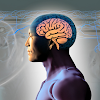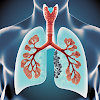Types of Diseases in the World
Diseases are an unfortunate reality of human existence, affecting individuals and populations worldwide. They can range from mild and temporary to chronic and life-threatening. Understanding the different types of diseases is crucial for raising awareness, implementing preventive measures, and promoting effective treatment strategies. This article provides an overview of various types of diseases, including infectious diseases, non-communicable diseases, genetic disorders, and environmental #diseases, shedding light on their causes, symptoms, and impact on global health.
1. Infectious Diseases:
Infectious #diseases are caused by microorganisms such as bacteria, viruses, fungi, and parasites. They can spread from person to person or through contaminated food, water, or vectors. Examples of infectious diseases include malaria, tuberculosis, influenza, HIV/AIDS, and COVID-19. These diseases can have severe consequences, ranging from mild respiratory infections to life-threatening conditions. Understanding transmission modes, practicing good hygiene, and promoting vaccination are essential for preventing the spread of infectious diseases.
2. Non-communicable Diseases:
Non-communicable #diseases (NCDs), also known as chronic diseases, are long-term conditions that are typically not caused by infectious agents. They are often influenced by lifestyle factors such as poor diet, physical inactivity, tobacco use, and excessive alcohol consumption. Common NCDs include cardiovascular diseases, diabetes, cancer, respiratory diseases, and mental health disorders. NCDs have become a global health challenge, contributing to premature deaths and significant healthcare costs. Prevention and management of NCDs require lifestyle modifications, regular screenings, access to quality healthcare, and public health initiatives.
3. Genetic Disorders:
Genetic disorders are caused by abnormalities or mutations in an individual's genes or chromosomes. They can be inherited from parents or occur spontaneously. Genetic disorders encompass a wide range of conditions, including Down syndrome, cystic fibrosis, sickle cell disease, and hemophilia. These #diseases can manifest in various ways, impacting physical, cognitive, or developmental aspects of an individual's health. Genetic counseling, early diagnosis, and ongoing medical care play crucial roles in managing genetic disorders.
4. Environmental Diseases:
Environmental #diseases are caused by exposure to harmful substances or conditions in the environment. They can result from air pollution, water contamination, toxic chemicals, occupational hazards, or exposure to radiation. Examples include asthma, lead poisoning, mesothelioma, and certain types of cancer. Prevention of environmental diseases requires awareness of potential hazards, adherence to safety regulations, and efforts to reduce pollution and promote a healthy environment.
The diverse range of #diseases in the world highlights the complexity of human health. Infectious diseases continue to pose significant challenges, requiring global cooperation in prevention,
detection, and treatment. Non-communicable diseases are on the rise, demanding lifestyle modifications and improved access to healthcare. Genetic disorders necessitate specialized care and support for affected individuals and families. Environmental diseases remind us of the importance of protecting our surroundings and reducing exposure to harmful substances. As we strive for better health outcomes, it is vital to invest in research, education, and healthcare infrastructure. By understanding the different types of diseases and implementing comprehensive strategies, we can work towards a healthier world, where prevention, early detection, and effective treatment are accessible to all.



.png)


0 Comments